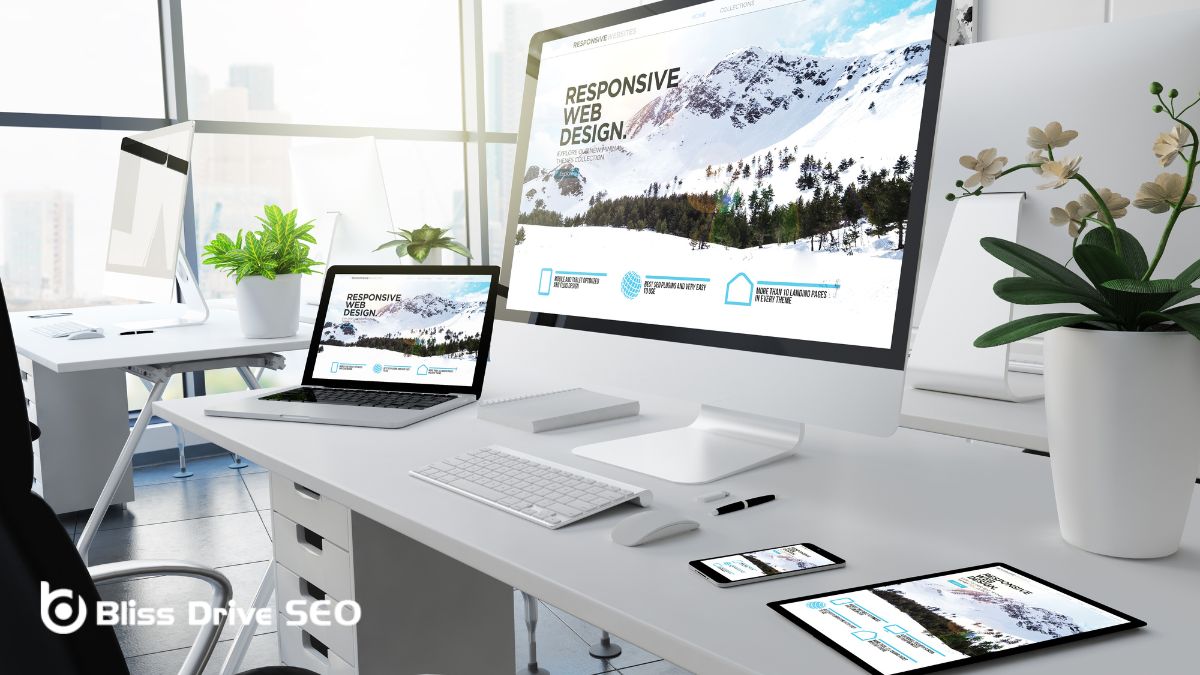Learn More About Us

If you're looking to boost your website's conversionThe completion of a desired action by a referred user, such as making a purchase or filling out a fo... rates, enhancing the user experience (UX)The overall experience a user has when interacting with a website or application, including usabilit... is a great place to start. There are five key strategies you can implement to make your site more engaging and effective. For instance, optimizing your page load speed is essential; no one likes waiting around for slow pages. Simplifying navigation can also keep users from bouncing away in frustration. Want to know how clear calls-to-action, mobile responsiveness, and leveraging user feedback can make a difference? Let's explore these tips and see how they can transform your site's performance.

When it comes to enhancing user experience and boosting conversions, optimizing page load speed is vital. Website speed directly impacts how users interact with your site. Just a 1-second delay can leadA potential customer referred by an affiliate who has shown interest in the product or service but h... to a 7% decrease in conversions, making every second important. To improve your website speed, you should focus on optimizing both content and scripts. This will help reduce bounce rates and increase user engagementThe level of interaction and involvement users have with social media content..
Start by streamlining your content. Compress images and videos using tools like Compressor.io. This will greatly reduce loading times without sacrificing quality. Quicker loading times mean users are less likely to leave your site before it fully loads, thereby decreasing bounce rates and improving user satisfaction.
Next, optimize your scripts by minimizing and deferring them. Heavy scripts can slow down your site, so it's crucial to only include necessary ones and load them asynchronously. This guarantees that your main content loads quickly, keeping users engaged.
Simplifying navigation is fundamental to enhancing user experience and driving conversions. When users can easily find what they're looking for, they're more likely to stay on your site, reducing bounce rates by up to 26%. Since 94% of first impressions are design-related, a well-thought-out website navigation is essential for a positive user experience.
Here are five tips to help you create simple, clear, and intuitive navigation:
A clear call-to-action (CTA) can greatly enhance your conversion rates by guiding users toward the actions you want them to take. Clear CTAs like "Get Started" or "Shop Now" provide direct and actionable instructions, assisting users in knowing exactly what to do next.
To increase conversion rates, you need to experiment with different CTA designs and placementsSpecific websites or locations within websites where ads can appear. through A/B testingA method of comparing two versions of a web page or app against each other to determine which one pe.... This way, you can identify which variations resonate best with your audience.
Using contrasting colors for your CTAs is another impactful strategy. These colors make your buttons stand out, attracting user attention and leading to higher click-through rates. For example, a bright red button on a white background is hard to overlook.
Additionally, make sure your CTAs have concise, action-oriented wording. Phrases like "Try for Free" or "Subscribe Today" can prompt users to take immediate action.
Strategically placing well-designed CTAs within the user flow is vital. If users naturally encounter these prompts at key decision points, they're more likely to follow through with the desired actions. By focusing on clear CTAs, you can effectively guide your visitors and greatly enhance your conversion rates.

Ensuring your website is mobile-friendly is pivotal for capturing and retaining today's on-the-go users. With over 50% of global web trafficThe number of visitors to a website, often used as a measure of an affiliate's reach and influence. coming from mobile devices, optimizing for mobile responsiveness is essential for conversions. Google prioritizes mobile-friendly sites in search results, meaning your site's visibility and organic trafficVisitors who come to a website through unpaid search engine results. hinge on this optimization.
Responsive designA web design approach that makes web pages render well on a variety of devices and window or screen ... guarantees a consistent user experience across all devices, reducing bounce rates and boosting user engagementThe interactions that users have with a brand’s content on social media.. Mobile users are more inclined to convert on sites that are tailored for mobile, underscoring the necessity for a seamless mobile experience.
To enhance mobile-friendly design, consider the following:
Harnessing user feedback is a powerful tool for enhancing UX and driving higher conversions. By actively gathering user opinions and preferences through feedback widgets and surveys, you can uncover valuable insights into what works and what doesn't. This information is vital for understanding the user journey and identifying pain points that might be impeding user engagement.
To optimize UX, start by analyzing the feedback you collect. Look for recurring themes and common issues that users face. This analysis helps you pinpoint specific areas for improvement in your design.
For example, if users consistently struggle with a particular feature, you know it's time to refine that aspect of the user experience.
Implementing changes based on user feedback can greatly boost user engagement and lead to higher conversions. Users feel valued when their opinions are taken into account, fostering loyalty and trust. Remember, the process doesn't end after making improvements. Continuous collection and analysis of user feedback are essential for keeping your UX optimized.
Regularly update your surveys and feedback methods to stay in tune with evolving user needs and preferences. This ongoing effort ensures that you're consistently providing an outstanding user experience, ultimately driving higher conversions.
How can improving navigation enhance UX for higher conversions? Clear and intuitive navigation is vital because it helps users find what they are looking for without frustration. Enhancing navigation can involve:
What role do page load times play in UX and conversions? Page load timeThe time it takes for a webpage to fully load, affecting user experience and conversion rates. is a critical aspect of UX. Faster pages improve the user experience by providing the information users need without delay. Slow-loading pages can lead to increased bounce rates and decreased conversions as users may lose patience and leave. Optimizing images, leveraging browser caching, and minimizing the use of heavy scripts can help improve load times.
Can personalizationTailoring content and offers to individual users based on their behavior, preferences, or demographi... impact UX and conversion rates? Personalization can significantly enhance UX by making the user feel recognized and valued. This can involve:
How does mobile optimization affect UX and conversions? With a significant and growing number of users accessing the internet via mobile devices, mobile optimization is essential for good UX. A mobile-optimized site should:
By focusing on these five tips, you're setting your site up for higher conversions and a better user experience. Speed up page loads, simplify navigation, use clear calls-to-action, guarantee mobile responsiveness, and listen to user feedback. Each step directly impacts how users interact with your site, making it easier for them to convert. Implement these strategies, and you'll see a noticeable improvement in user satisfaction and conversion rates.
